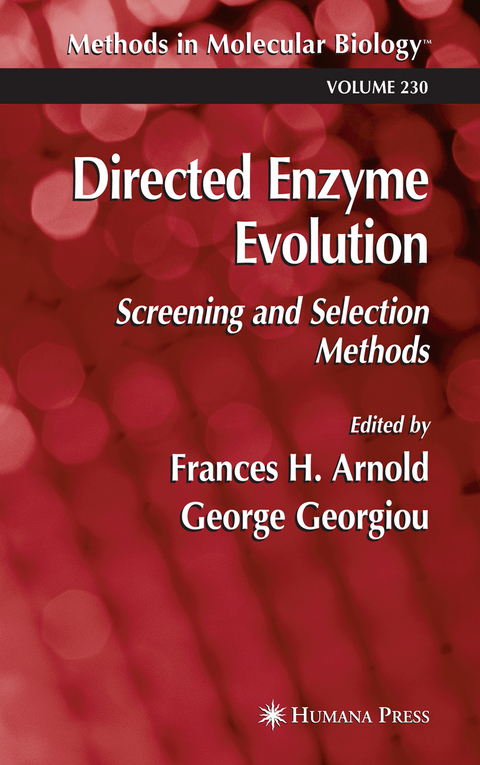
Directed Enzyme Evolution
Humana Press Inc. (Verlag)
978-1-58829-286-5 (ISBN)
Genetic Selections.- Genetic Complementation Protocols.- Use of Pol I-Deficient E. coli for Functional Complementation of DNA Polymerase.- Selection of Novel Eukaryotic DNA Polymerases by Mutagenesis and Genetic Complementation of Yeast.- Autogene Selections.- Selection for Soluble Proteins via Fusion with Chloramphenicol Acetyltransferase.- Proside.- Minimization of Proteins by Random Fragmentation and Selection.- Screens for Enzymes.- Evaluating a Screen and Analysis of Mutant Libraries.- Screening Mutant Libraries in Saccharomyces cerevisiae.- Solid-Phase Screening Using Digital Image Analysis.- Screening for Thermostability.- High-Throughput Screening of Mutant ?-Amylase Libraries for Increased Activity at 129°C.- High-Throughput Carbon Monoxide Binding Assay for Cytochromes P450.- High-Throughput Screen for Aromatic Hydroxylation.- Colorimetric Screen for Aliphatic Hydroxylation by Cytochrome P450 Using p-Nitrophenyl-Substituted Alkanes.- High-Throughput Screens Based on NAD(P)H Depletion.- High-Throughput Tetramethylbenzidine (TMB) Screen for Peroxidases.- Screen for Oxidases by Detection of Hydrogen Peroxide with Horseradish Peroxidase.- Colorimetric Dehydrogenase Screen Based on NAD(P)H Generation.- Colorimetric Assays for Screening Laccases.- pH Sensing Agar Plate Assays for Esterolytic Enzyme Activity.- A pH-Indicator-Based Screen for Hydrolytic Haloalkane Dehalogenase.- Detection of Aromatic ?-Hydroxyketones with Tetrazolium Salts.- Selection of Heat-Stable Clostridium cellulovorans Cellulases After In Vitro Recombination.- Screening and Selection Strategies for Disulfide Isomerase Activity.- An Overview of High-Throughput Screening Systems for Enantioselective Enzymatic Transformations.- Select Protocols of High-Throughput ee-Screening Systems forAssaying Enantioselective Enzymes.- Directed Evolution of the Substrate Specificities of a Site-Specific Recombinase and an Aminoacyl-tRNA Synthetase Using Fluorescence-Activated Cell Sorting (FACS).- Calmodulin-Tagged Phage and Two-Filter Sandwich Assays for the Identification of Enzymatic Activities.- High-Throughput FACS Method for Directed Evolution of Substrate Specificity.- Improving Protein Folding Efficiency by Directed Evolution Using the GFP Folding Reporter.
"...covers a considerable number of protocols for a broad range of enzymes...very useful..." - ChemBioChem
| Erscheint lt. Verlag | 16.5.2003 |
|---|---|
| Reihe/Serie | Methods in Molecular Biology ; 230 |
| Zusatzinfo | XV, 383 p. |
| Verlagsort | Totowa, NJ |
| Sprache | englisch |
| Maße | 152 x 229 mm |
| Themenwelt | Informatik ► Weitere Themen ► Bioinformatik |
| Naturwissenschaften ► Biologie ► Biochemie | |
| Naturwissenschaften ► Biologie ► Genetik / Molekularbiologie | |
| Naturwissenschaften ► Biologie ► Mikrobiologie / Immunologie | |
| Naturwissenschaften ► Biologie ► Zellbiologie | |
| ISBN-10 | 1-58829-286-X / 158829286X |
| ISBN-13 | 978-1-58829-286-5 / 9781588292865 |
| Zustand | Neuware |
| Haben Sie eine Frage zum Produkt? |
aus dem Bereich


